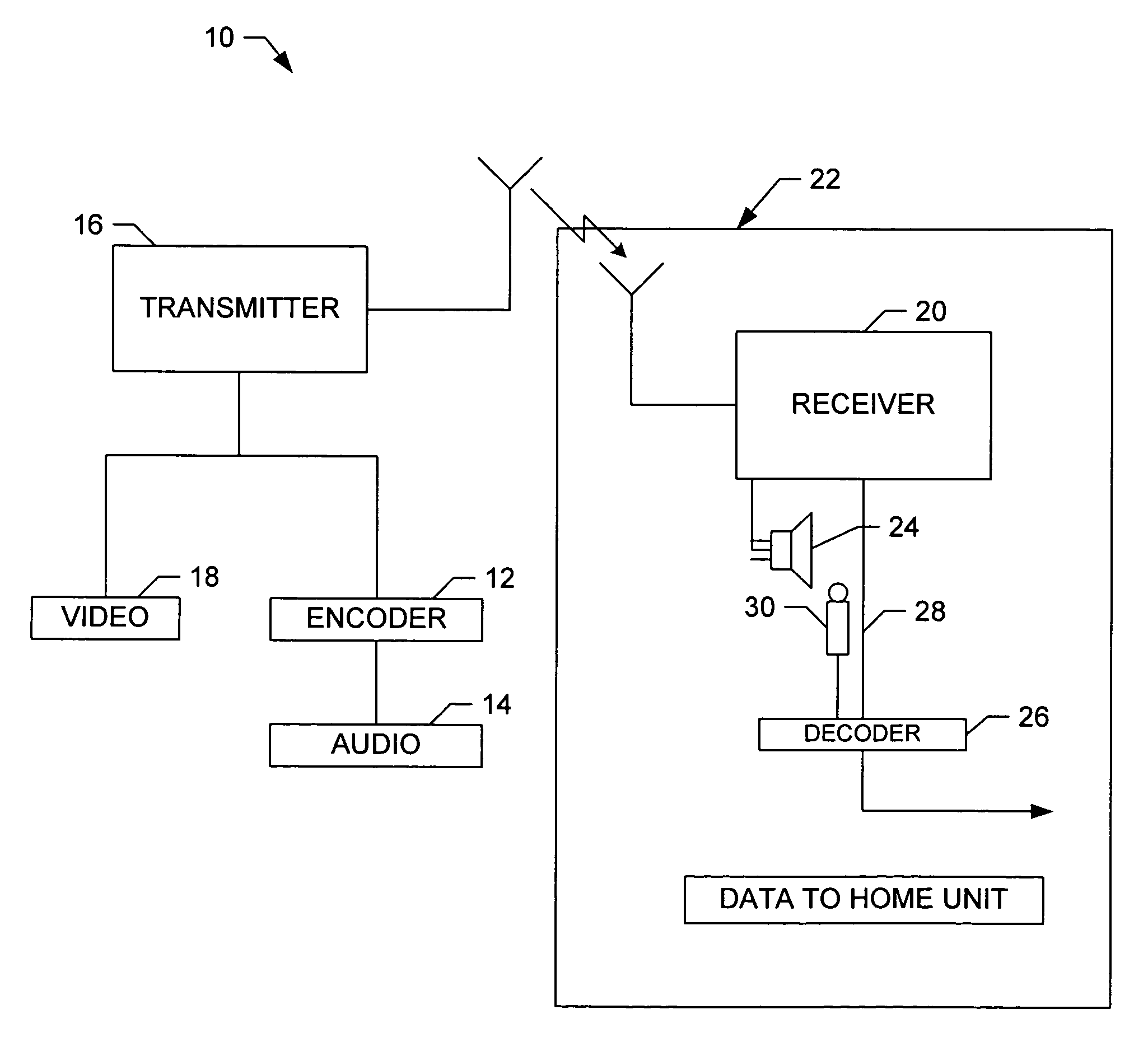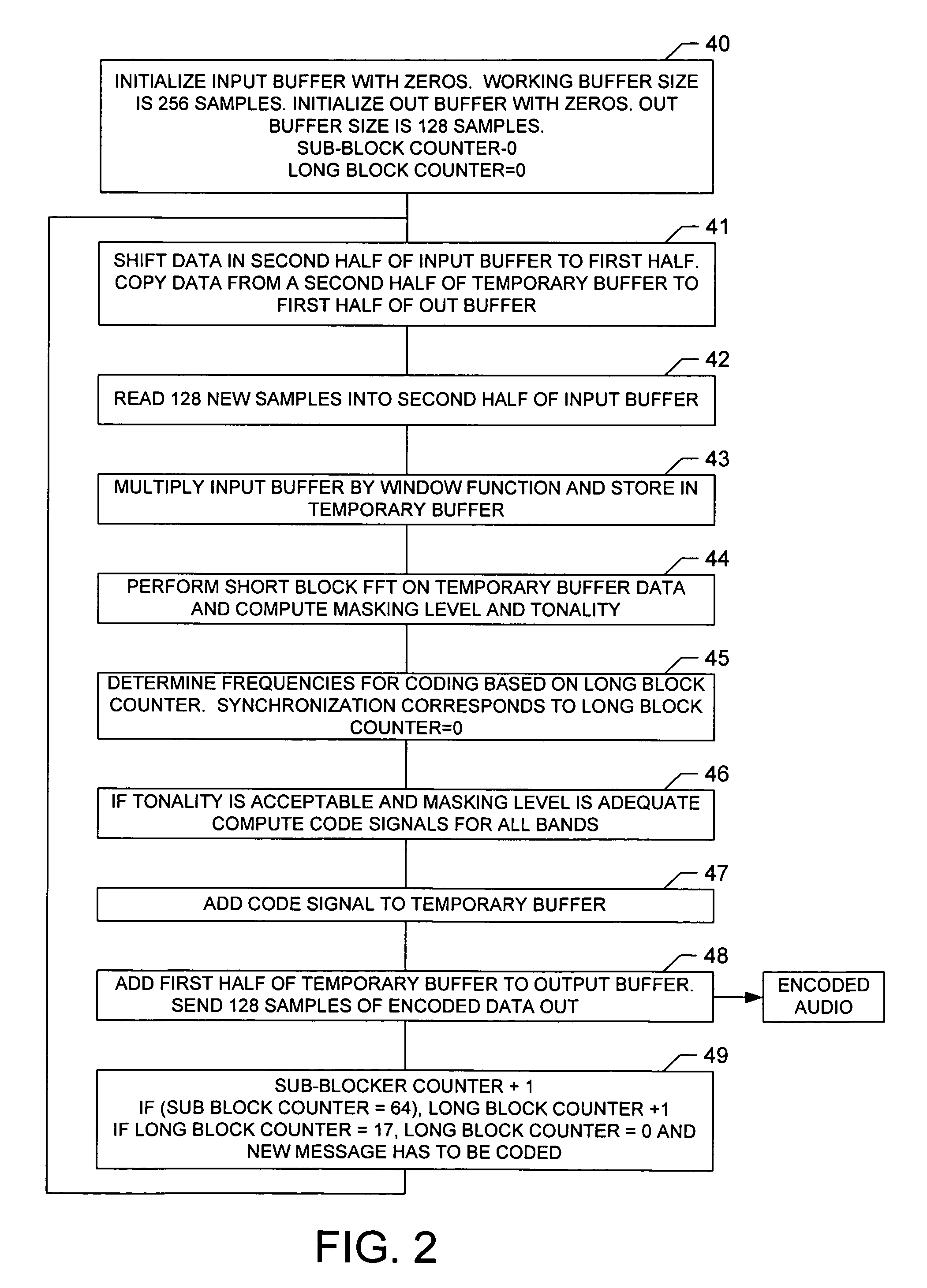Multi-band spectral audio encoding
a multi-band spectral audio and encoding technology, applied in the field of multi-band spectral audio encoding, can solve the problems of reducing the dynamic range of the signal, affecting the quality of the signal,
- Summary
- Abstract
- Description
- Claims
- Application Information
AI Technical Summary
Benefits of technology
Problems solved by technology
Method used
Image
Examples
Embodiment Construction
[0031]Audio signals are usually digitized at sampling rates that range between thirty-two kHz and forty-eight kHz. For example, a sampling rate of 44.1 kHz is commonly used during the digital recording of music. However, digital television (“DTV”) is likely to use a forty eight kHz sampling rate. Besides the sampling rate, another parameter of interest in digitizing an audio signal is the number of binary bits used to represent the audio signal at each of the instants when it is sampled. This number of binary bits can vary, for example, between sixteen and twenty four bits per sample. The amplitude dynamic range resulting from using sixteen bits per sample of the audio signal is ninety-six dB. This decibel measure is the ratio of the square of the highest audio amplitude (216=65536) to the square of the lowest audio amplitude (12=1). The dynamic range resulting from using twenty-four bits per sample is 144 dB. Raw audio, which is sampled at the 44.1 kHz rate and which is converted t...
PUM
 Login to View More
Login to View More Abstract
Description
Claims
Application Information
 Login to View More
Login to View More - R&D
- Intellectual Property
- Life Sciences
- Materials
- Tech Scout
- Unparalleled Data Quality
- Higher Quality Content
- 60% Fewer Hallucinations
Browse by: Latest US Patents, China's latest patents, Technical Efficacy Thesaurus, Application Domain, Technology Topic, Popular Technical Reports.
© 2025 PatSnap. All rights reserved.Legal|Privacy policy|Modern Slavery Act Transparency Statement|Sitemap|About US| Contact US: help@patsnap.com



